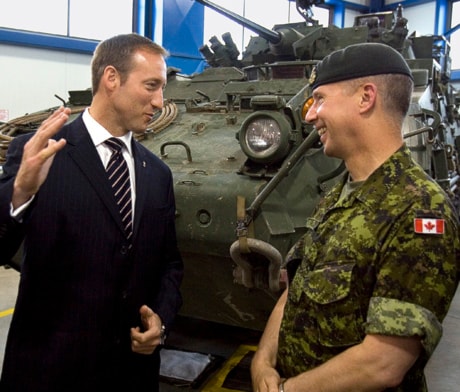OROMOCTO, N.B. — The federal government is spending more than $5 billion to upgrade the Canadian army’s combat vehicles, including improvements for its existing light armoured vehicle fleet.
At an announcement Wednesday at CFB Gagetown, Defence Minister Peter MacKay said about $1 billion will be spent to upgrade the LAV-3s that are in service in Afghanistan.
The government is also buying close combat vehicles, tactical armoured patrol vehicles and force mobility enhancement vehicles.
“Our government is committed to providing the army with the modern robust equipment it needs to fulfil its missions in today’s dangerous operating environment,” MacKay said.
“Wherever in the world Canadian soldiers find themselves, we owe it to them to give them the protective equipment that they need to do the job we’ve asked them to do.”
The LAV-3s have been the army’s principle fighting vehicle in Afghanistan, but have taken a beating, with many in need of an overhaul by the time the combat mission ends in 2011.
General Dynamics Land Systems Canada will be the prime contractor on the LAV upgrade.
Tom de Faye, the company’s director of marketing and business development, said recent missions have taught them a great deal.
“With this upgrade program, we’ll now be able to take the lessons learned from the deployment of LAV-3s in Afghanistan and the Strykers in Iraq, with over 40 million km of combat experience,” he said.
He said the end product will be a much more capable and better protected vehicle, ready to take on the threats and challenges of current and future battlefields.
“This is a significant day for the army,” said Lt.-Gen. Andrew Leslie, chief of land staff. “Actually, it’s a great day for the army.”
The government says it expects the entire fleet to be fully operational by 2015.
